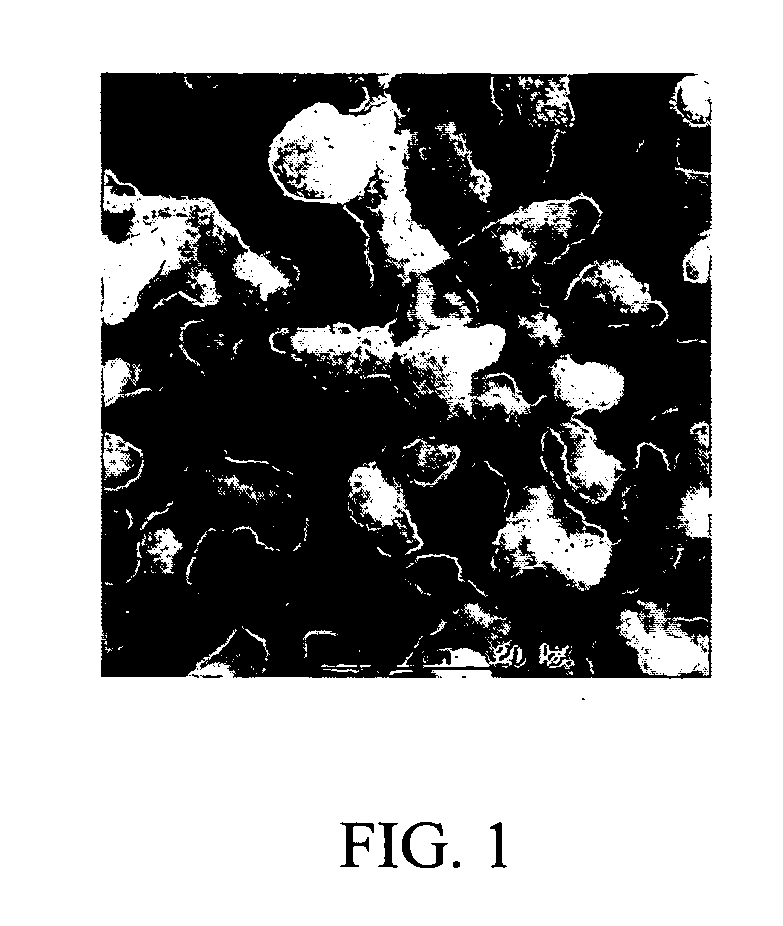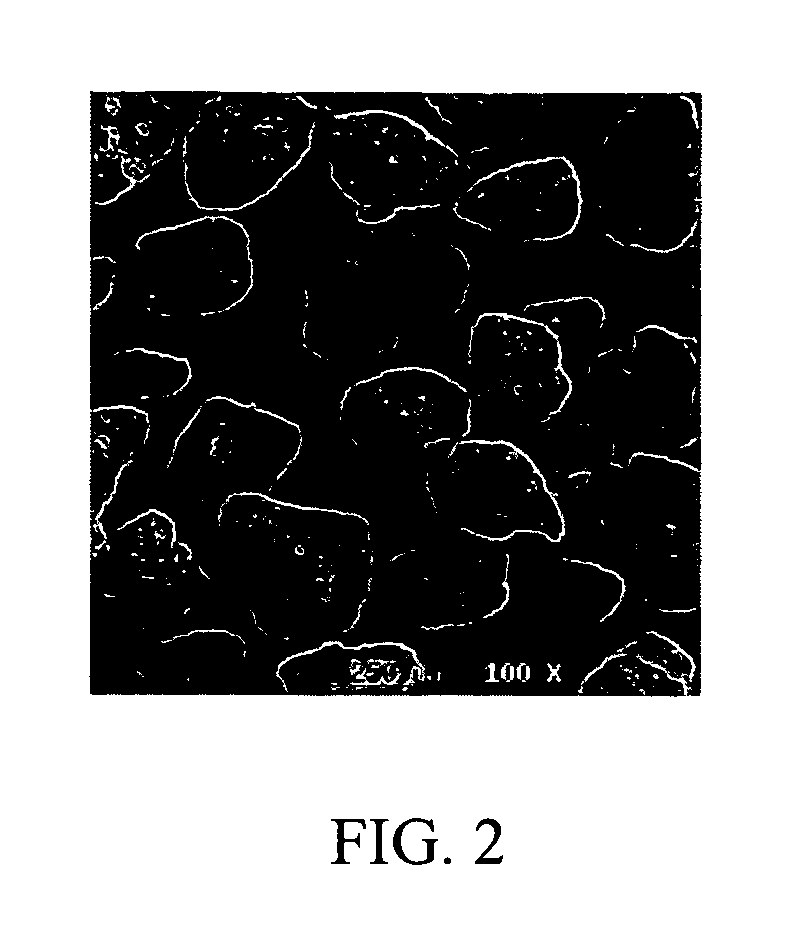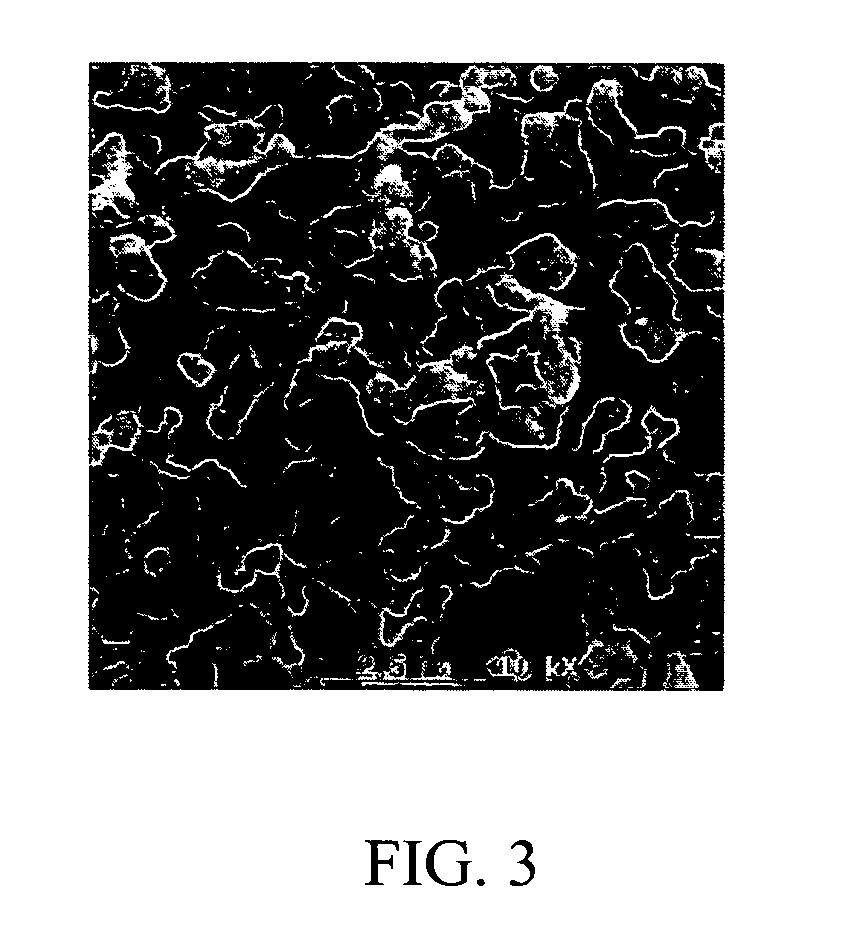Processes for the production of niobium oxides with controlled tantalum content and capacitors made therefrom
a technology of niobium oxide and controlled tantalum content, which is applied in the direction of niobium compounds, inorganic chemistry, electrolytic capacitors, etc., can solve the problem that it is not known in the art to produce a niobium pentoxide with a controlled tantalum content, and achieve low leakage current and high capacitance
- Summary
- Abstract
- Description
- Claims
- Application Information
AI Technical Summary
Benefits of technology
Problems solved by technology
Method used
Image
Examples
example 1
[0068] 1,000 grams of ammonium niobium oxalate and 0.75 gram of potassium tantalate were dissolved in water, until a homogeneous solution was obtained. This solution was precipitated, and a hydrous niobate and tantalate was obtained. The potassium was eliminated by leaching the precipitates with acid solution several times, followed by several washing with de-ionized water. The precipitates were dried, and calcined to eliminate water and other volatile compounds. The product was characterized and the following results were obtained: [0069] X-Ray Diffraction: Nb2O5 [0070] Specific surface area, BET analysis method: 10.1 m2 / g
[0071] A small sample (50 grams) of niobium pentoxide with controlled tantalum content was loaded into a tubular vacuum furnace. Hydrogen gas was admitted into the furnace chamber, and the furnace temperature was raised from room temperature to 700° C. The load was kept at this temperature for 18 hours, whereupon the heating was turned off. The hydrogen atmospher...
example 2
[0082] 1,000 grams of ammonium niobium oxalate were dissolved in a solution containing tantalum oxalate (0.5 gram), until a homogeneous solution was obtained. This solution was precipitated, and a hydrate niobium and tantalum oxide was obtained. The precipitates were washed with de-ionized water several times. The precipitates were dried, and calcined to eliminate water and other volatile compounds. The product was characterized and the following results were obtained: [0083] X-Ray Diffraction: Nb2O5 [0084] Specific surface area, BET analysis method: 10.5 m2 / g
[0085] A small sample (50 grams) of niobium pentoxide with controlled tantalum content was loaded into a tubular vacuum furnace. Hydrogen gas was admitted into the furnace chamber, and the furnace temperature was raised from room temperature to 700° C. The load was kept at this temperature for 12 hours, whereupon the heating was turned off. The hydrogen atmosphere was maintained until the load reached room temperature, whereup...
example 3
[0098] 400 grams of niobium pentachloride and 0.5 gram of tantalum pentachloride were dissolved in alcohol, until a homogeneous solution was obtained. This solution was precipitated by evaporation of the solvent. The precipitates were calcined in air to eliminate volatile compounds. The product was characterized and the following results were obtained: [0099] X-Ray Diffraction: Nb2O5 [0100] Specific surface area, BET analysis method: 25.5 m2 / g
[0101] A small sample (50 grams) of niobium pentoxide with controlled tantalum content was loaded into a tubular vacuum furnace. Hydrogen gas was admitted into the furnace chamber, and the furnace temperature was raised from room temperature to 700° C. The load was kept at this temperature for 9 hours, whereupon the heating was turned off. The hydrogen atmosphere was maintained until the load reached room temperature, whereupon the furnace chamber was pressurized with nitrogen prior to removal of the load from the furnace. The product of this ...
PUM
 Login to View More
Login to View More Abstract
Description
Claims
Application Information
 Login to View More
Login to View More - R&D
- Intellectual Property
- Life Sciences
- Materials
- Tech Scout
- Unparalleled Data Quality
- Higher Quality Content
- 60% Fewer Hallucinations
Browse by: Latest US Patents, China's latest patents, Technical Efficacy Thesaurus, Application Domain, Technology Topic, Popular Technical Reports.
© 2025 PatSnap. All rights reserved.Legal|Privacy policy|Modern Slavery Act Transparency Statement|Sitemap|About US| Contact US: help@patsnap.com



